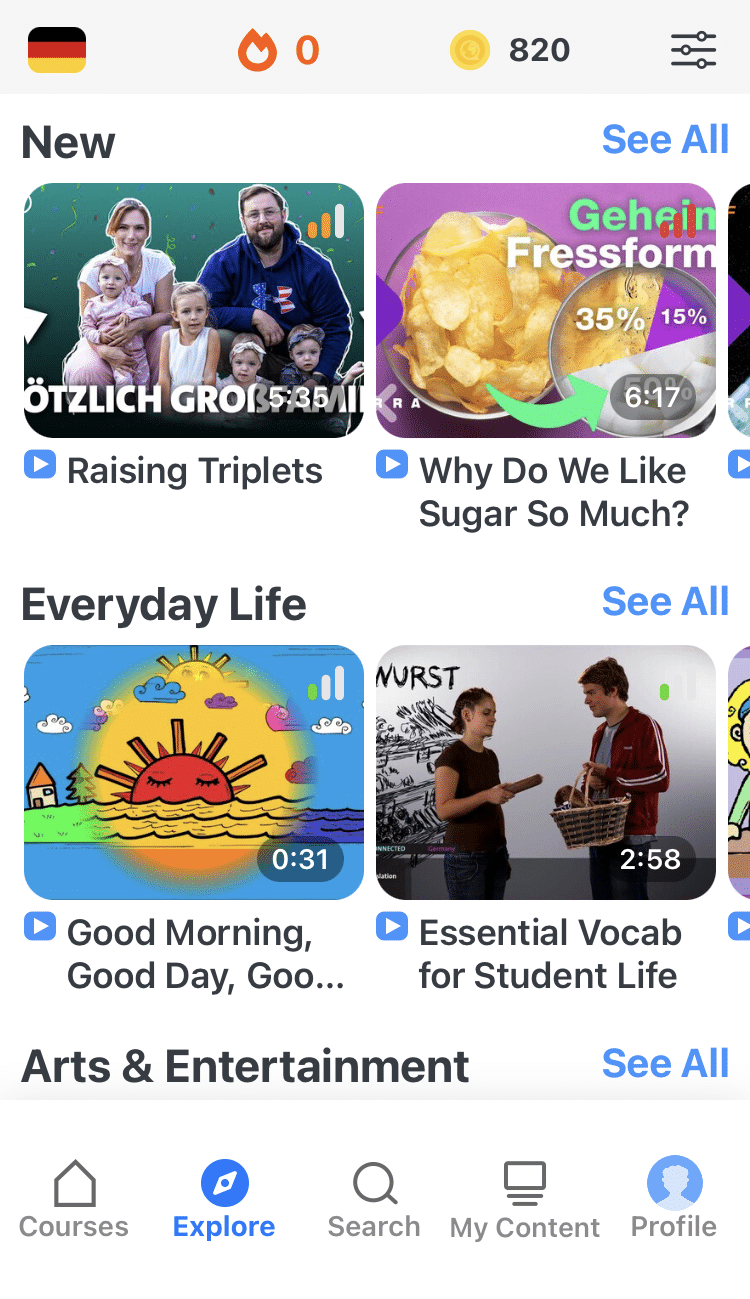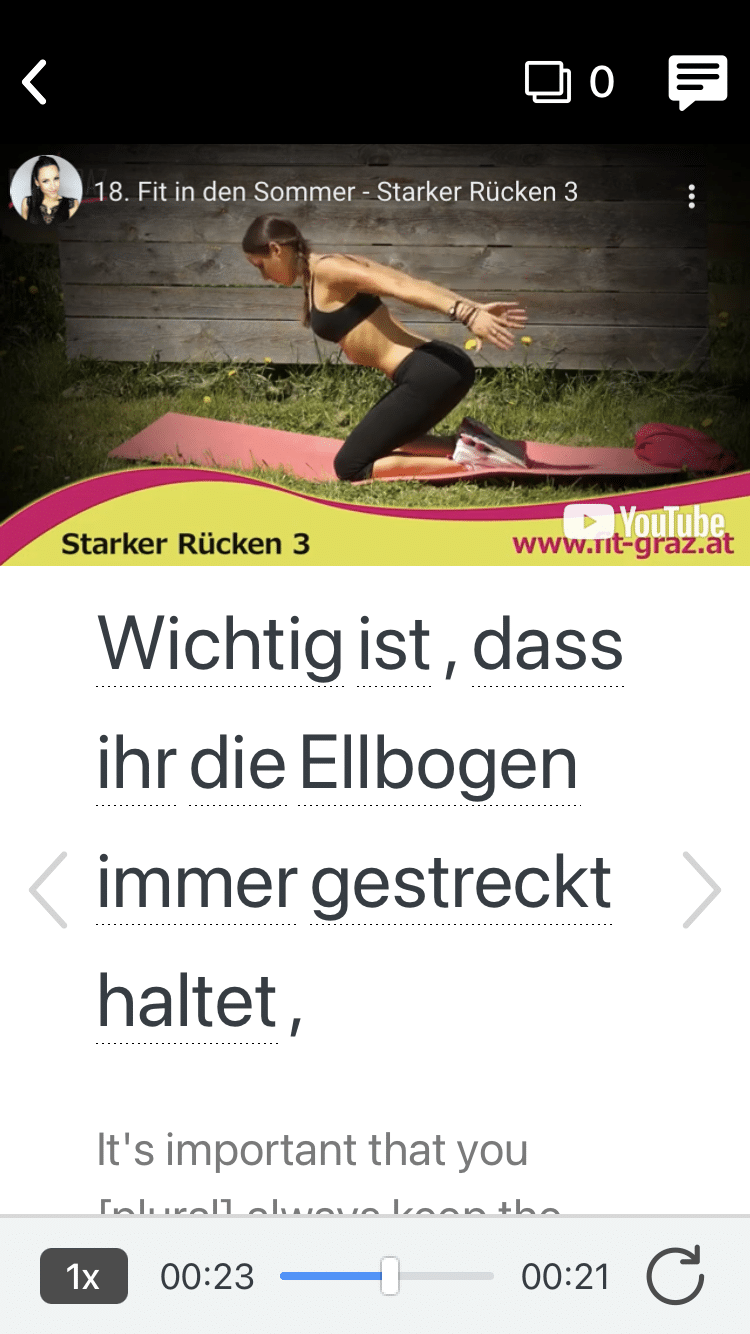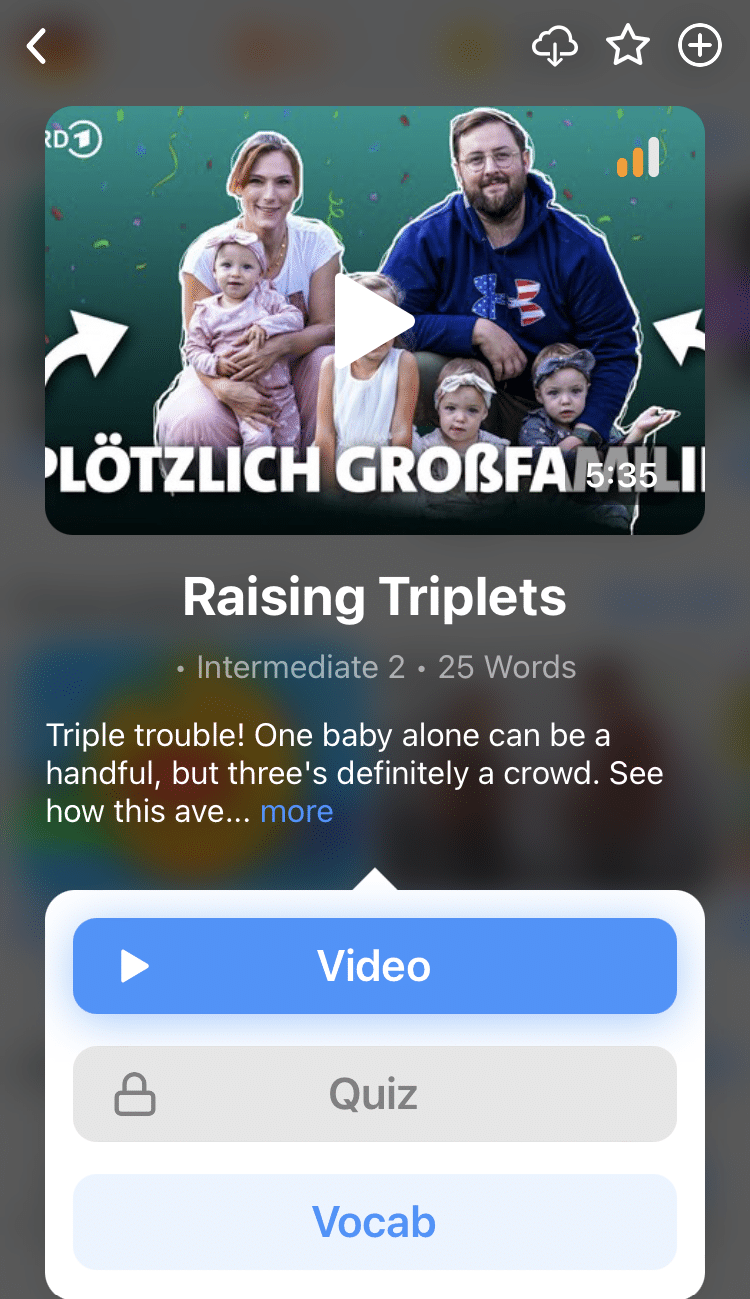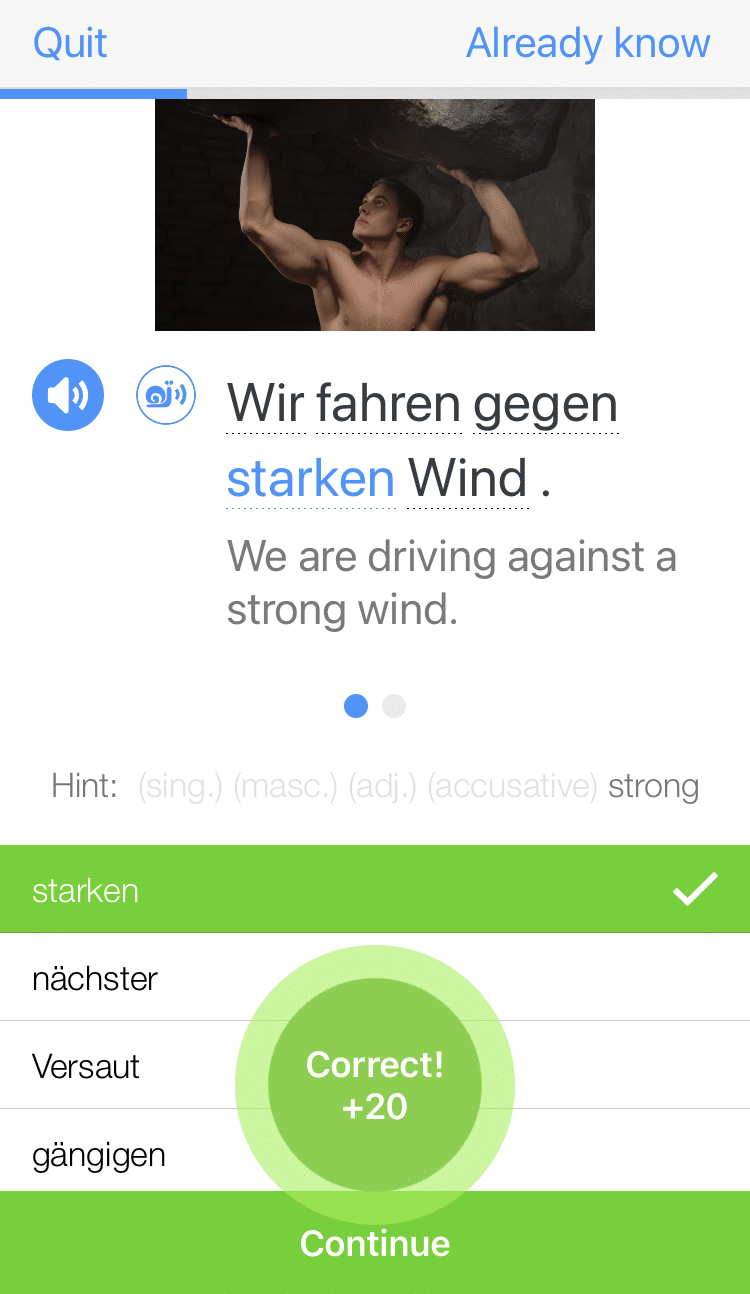
5 Best Sites for German Translation Exercises
Translation exercises are a great way to boost your writing skills.
Not only will they improve your writing, but they’ll also force you to think in German and wrestle with the grammar and vocabulary in real contexts.
Below, I’ll cover why you should do German translation exercises in the first place, and the many different German translation exercises I’ve used to move my German forward.
Contents
- Where to Find the Best Online German Translation Exercises
- DIY German Translation Exercises
- Why Spend Time on German Translation Exercises?
- And One More Thing...
Download: This blog post is available as a convenient and portable PDF that you can take anywhere. Click here to get a copy. (Download)
Where to Find the Best Online German Translation Exercises
When I first started doing German translation exercises on my own, naturally I started out with those others had already made. Luckily enough for you, I’ve done all the hard work and gathered a few for you here already.
Below are some online German translation exercises of various levels of difficulty, many of which come with solutions built-in so you can check your work.
1. Deutschzentrum Wien

Deutschzentrum Wien (German Center Vienna), a language school in Vienna, has online German language worksheets for beginner and intermediate levels.
In the page linked above, there’s a link to an e-book for beginners learning German. Similar to the practice tests, this is an opportunity to translate short, authentic German texts that were written specifically for German learners. Since each chapter focuses on a specific grammar or vocabulary topic, you know what context you’re working in and won’t get lost too easily.
Best of all, the e-book has plenty of fill-in-the-blank exercises, conjugation exercises and other types of practice you can use as well!
The link above also has German exercises for each level from absolute beginner to upper-intermediate. Each of these individual pages has a variety of exercises from word matching, to forming the right pronoun ending, to choosing the right preposition in a given context.
I found that this book and the website generally were great resources that broke down the grammar and language behind the more difficult aspects of German.
2. FluentU
This German learner program lets you practice translation with audio and video. It features video clips from authentic German media including movie trailers, music videos, news segments and more.
You have a number of options to practice your translation skills on FluentU. To start with, every video has subtitles with German and English options. Turn off the English subtitles and watch the video. Try your best to translate the content, then turn English subs back on and see how you did.
You can check your accuracy at any point by clicking on a word in the captions—this will show you its definition, example sentences, other videos with the word in them and more.
If you want something more automated, FluentU has quizzes following each video, which include questions that ask you to translate key sentences.
You’ll also get plenty of practice when you save words to your flashcard decks, thanks to personalized exercises that hone your understanding of each word.
3. German Wikibook

This “wikibook” is actually an entire online textbook designed to guide you through the beginner stages and up. Its more advanced levels are still being developed, but I found it quite comprehensive with both language theory and practice.
Each of the exercise sets includes German translation exercises for you to sharpen your skills. To guide you through it, each “section” is broken down into lessons, each of which has a set of review exercises at the end. Many of these include translation exercises with answers.
While the wikibook linked above is the official version, there are also PDF versions of it floating around. There’s a quite minimalist PDF version linked from the homepage of the wikibook, but I also found this PDF of the book floating around Wikimedia.
German Translation Exercises on Quizlet

If you’re unfamiliar with Quizlet, it’s basically a user-generated online repository of flashcards and other similar learning tools on any topic imaginable. Naturally, that includes German and German translation exercises.
Here’s a sample set from English to German and one from German to English. Open up the sets and translate each sentence before checking your answer against the provided solution. You can also hear the German sentence read aloud by clicking the microphone icon.
Searching for translation exercises on Quizlet yields quite a few more results as well.
4. Klett Sprachen’s Modelltests

Modelltests, (“model” or practice exams), are quite common online as well. Even though they may not focus on translation exercises per se, they’re a great source for short, authentic German texts that you can easily choose based on your level.
If you follow the link above, you’ll find a table full of Modelltests from prominent German language exam providers at each level of examination in increasing difficulty, from beginner to advanced.
To find the German translation exercises in each of these practice exams, open the version you want—for this example, we’ll use the TELC A2/B1 (upper beginner/intermediate) exam titled Deutsch-Test für Zuwanderer (German Test for Immigrants). On this page, you’ll find download links to both the writing and reading parts of the exam, as well as separate links to the audio data for the listening portions.
The main parts of this exam are the Hören Teil (listening portion) and the Lesen Teil (reading portion) at the beginning of the exam.
I found both sections extremely helpful. Working from German-English with natural, common scenarios, especially in the case of the Hören Teil, really put my brain into learning mode. You can even skip right down to the Transkripte (Transcripts) portion to see each listening segment written out, and translate from there.
I highly recommend using these as actual exams at each milestone of your German study! Best of all, you’ll also be absorbing the structure and typical activities on major German language exams, which is fantastic to study if you plan to take one of those in the future.
5. English-grammar.at
If you’re simply looking for some quick, intermediate-level German translation exercises, here are two simple worksheets to get you started. Early on in my search for translation work I found these on the web.
While they’re not very long (each is about 20 sentences of work), they’ll require you to apply your everyday, conversational German skills. You’ll encounter statements, questions, commands, negation and more.
Simply head to the above link and click on the “Translation Worksheet” you want to open.
DIY German Translation Exercises
Besides all of the German translation materials available on the web, you can make your own. Using books and newspapers to improve my German has been a very natural way to learn the language, so I recommend the same for your language learning journey.
Below I’ll explain why I like to translate from each form, plus examples and sources for you to use to make and correct your own.
Translating with Books
Books, preferably those with engaging narratives, can pull you in and get you hooked on practicing German translation daily. If you’re into the story, you’ll just have to keep translating to find out what happens next!
For translating from German to English, which is slightly easier in my opinion, kids’ stories and books are a great option. Look for the German version of a book you loved when you were learning to read or still in elementary school.
For example, I’ve translated German versions of the Harry Potter series. Even though J.K. Rowling’s great work has lots of odd words in it, the language is generally pretty simple.
For translating from English to German, naturally, you can pick any book you want. Your translation should have the same variety of sentence structure as the English text, at the higher levels at least.
For my first foray into the English-to-German translation I chose “The Hobbit,” by J.R.R. Tolkien. Much like the Harry Potter series, Tolkien uses a lot of somewhat strange words in his books. Fortunately, “The Hobbit” was written for a younger audience and most of these odd words are proper nouns—the same in German as in English.
An effective trick to check your translations is to use your e-reader. For example, my Kindle has a dictionary function that’s activated by long-pressing on a word. Normally, this would just bring up the English dictionary entry. However, several German dictionaries are available for the Kindle. To add an additional dictionary to your Kindle, follow the instructions in this article.
Translating with Newspapers and Magazines
In addition to books, you can use newspapers and magazines as an endless source of German translation exercises. In my experience, translating them from German to English was much easier than working with books. I suppose the prose used in books is much more abstract and harder to parse for a non-native speaker, while newspapers are written to be easy to read.
What’s better is that you can pick any topic from your favorite newspaper and focus on translating articles from it. That way, you can learn the vocabulary that’s specific to that topic.
One great option is Deutsche Welle because they post articles in English and German, so you can toggle between the same article in both languages and compare your translation work. Check out some other popular German news sources here.
If you don’t have an article in two languages, grammar rule cheat sheets can help you as a quick reference guide, especially so if you’re working from English to German and can’t quite figure out how to phrase a particularly tricky construction. This large grammar cheat sheet from Portland State University is a great help when I translate.
Finally, there are dictionaries, of course. LEO, Dict.cc and Linguee are great German/English online dictionaries. Google Translate can get you through in a pinch, but it quite often misses context and connotation in translations.
Why Spend Time on German Translation Exercises?
Doing German translation exercises won’t simply help you write better cover letters—they’ll also test and strengthen the whole range of your German skills. They can also prepare you for a career in translation.
German translation exercises help you inherently understand the structure and flow of German. The way a sentence should be phrased will just sound natural to you at a certain point.
Similarly, you’ll be learning and applying German vocabulary in context. This is always more memorable than just matching up words to their definitions.
My favorite thing about German translation exercises is that you can tailor them to your personal interests and abilities with German. Because I’d started finding my own exercises for a specific purpose, I carefully selected the topic of the translation exercises I would be doing.
German translation exercises are a great way to really improve your language skills quickly. Your comprehension, vocabulary and natural understanding of the grammar and structure of the language are all going to grow through these kinds of exercises.
As I said at the beginning, my German writing skills lagged rather far behind my other abilities with the language. It wasn’t until far too late, in my opinion, that I realized this.
Don’t make the same mistake that I did. Make German translation exercises, at any level, a part of your learning regimen as soon as you can. You’ll thank yourself later!
Download: This blog post is available as a convenient and portable PDF that you can take anywhere. Click here to get a copy. (Download)
And One More Thing...
Want to know the key to learning German effectively?
It's using the right content and tools, like FluentU has to offer! Browse hundreds of videos, take endless quizzes and master the German language faster than you've ever imagine!
Watching a fun video, but having trouble understanding it? FluentU brings native videos within reach with interactive subtitles.
You can tap on any word to look it up instantly. Every definition has examples that have been written to help you understand how the word is used. If you see an interesting word you don't know, you can add it to a vocabulary list.
And FluentU isn't just for watching videos. It's a complete platform for learning. It's designed to effectively teach you all the vocabulary from any video. Swipe left or right to see more examples of the word you're on.
The best part is that FluentU keeps track of the vocabulary that you're learning, and gives you extra practice with difficult words. It'll even remind you when it’s time to review what you’ve learned.
Start using the FluentU website on your computer or tablet or, better yet, download the FluentU app from the iTunes or Google Play store. Click here to take advantage of our current sale! (Expires at the end of this month.)







